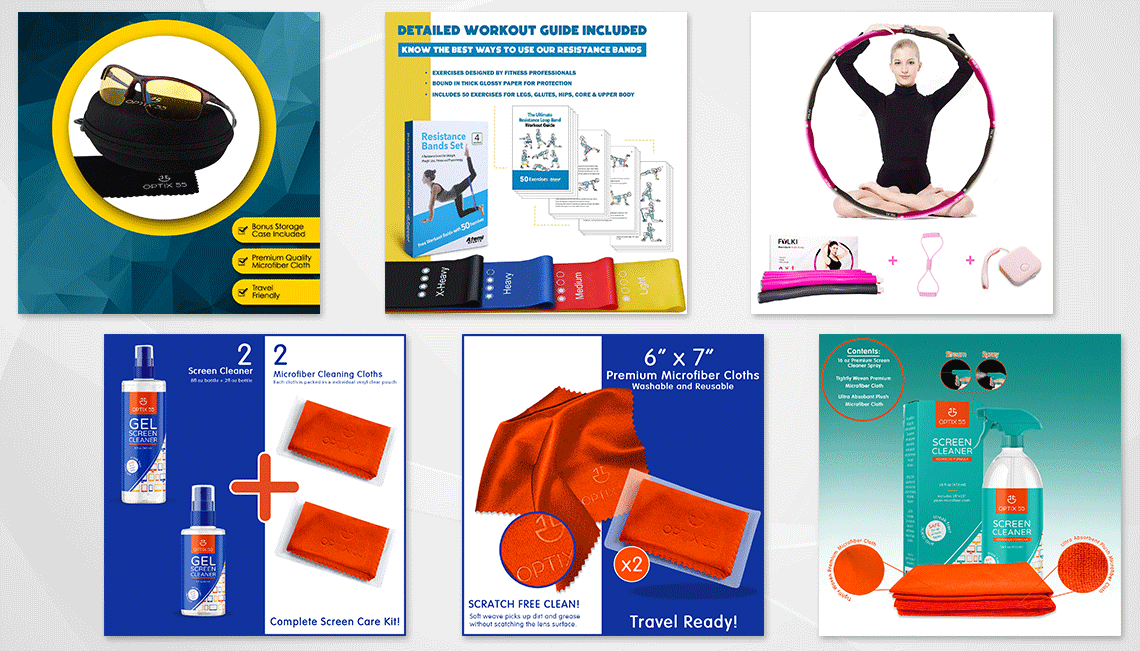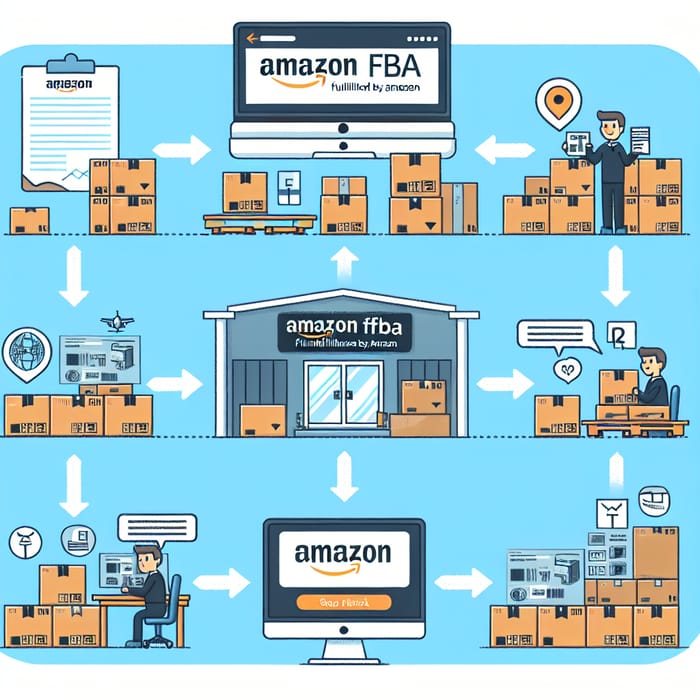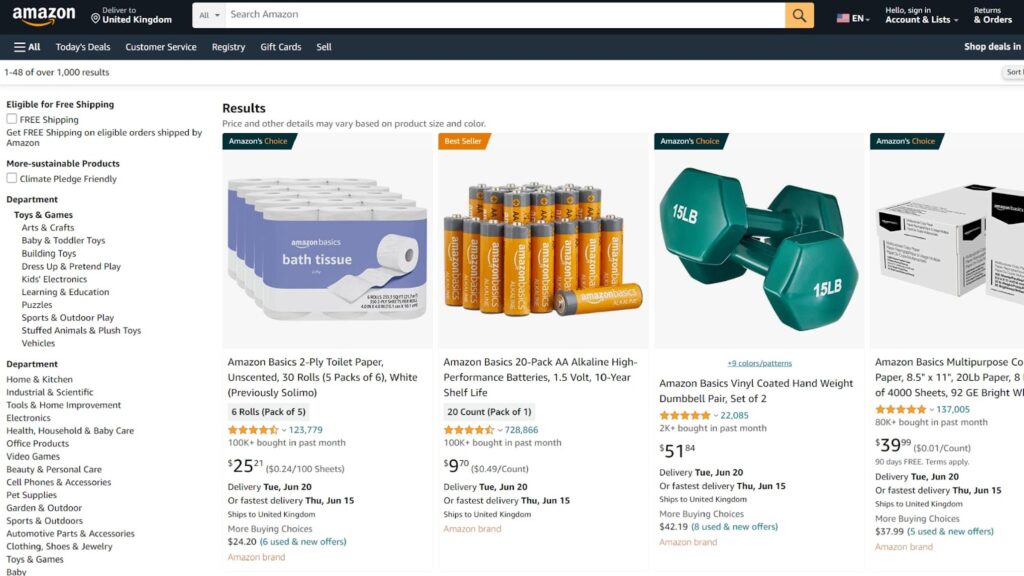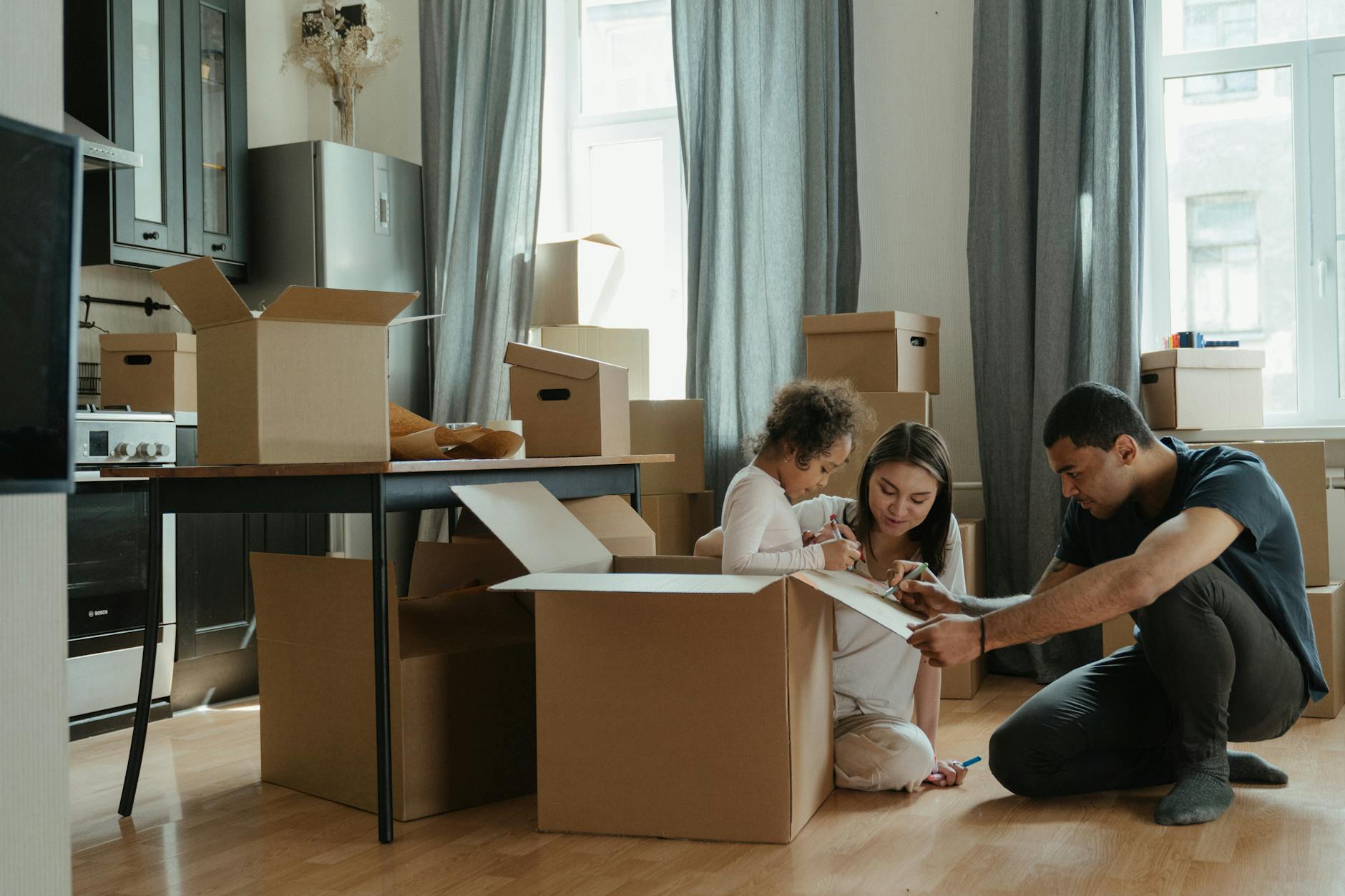Uncover the secrets to successful Amazon FBA packaging with these expert tips that will streamline your process and boost sales.
Table of Contents
- Introduction: Smart Packing for Amazon FBA
- Understanding Amazon FBA Packaging Guidelines
- The Right Box: Amazon FBA Box Requirements
- Perfect Placement: Amazon FBA Label Placement
- Labeling Like a Pro: How to Print Labels for Amazon FBA
- Securing Your Package
- Pallet it Up: Amazon FBA Pallet Requirements
- Safety First: Protecting Your Items During Transit
- Common Packaging Mistakes to Avoid
- Conclusion: Becoming a Packing Pro
- FAQs: Questions You Might Have About Amazon FBA Packaging
Introduction: Smart Packing for Amazon FBA
Welcome to the exciting world of Amazon FBA, where you can pack and ship products like a pro! Smart packing is crucial for Amazon FBA sellers like you because it ensures that your items reach customers safely and on time. By following Amazon’s packaging and shipping guidelines, you can impress your customers and build a successful business. Let’s dive into the essentials of smart packing for Amazon FBA!
Amazon FBA packaging and shipping guidelines provide you with a roadmap to success. By understanding and following these guidelines, you can streamline your operations, avoid costly mistakes, and keep your customers happy. Let’s explore why these guidelines are important and how they can benefit your FBA business.
Are you ready to become a packing pro and elevate your Amazon FBA game? Let’s get started!
Understanding Amazon FBA Packaging Guidelines
In order to successfully sell products with Amazon FBA, it’s crucial to understand and follow Amazon’s packaging guidelines. By adhering to these rules, you can ensure smooth operations and customer satisfaction. Let’s explore the general rules and materials needed for packaging your products.
General Rules for Packaging
Amazon has specific expectations for how packages should be prepared before they are sent to the warehouse. Every package must be securely packed to protect the contents during transit. This means using appropriate materials and ensuring the package is sealed properly. By following these simple rules, you can avoid issues with damaged items and delays in delivery.
Packaging Materials to Use
When it comes to packaging materials, it’s important to choose sturdy options that can withstand the rigors of shipping. Common materials used for packaging include cardboard boxes, bubble wrap, packing peanuts, and tape. These materials provide protection for your products and help prevent damage during transportation. Make sure to use high-quality materials to maintain the integrity of your packages.
The Right Box: Amazon FBA Box Requirements
When it comes to sending your products to Amazon, choosing the right box is crucial. Amazon has specific requirements that need to be met to ensure the safe delivery of your items. Let’s dive into the essential box requirements you need to know to become a successful Amazon FBA seller.

Image courtesy of www.ecomengine.com via Google Images
Choosing the Box Size
One of the first things to consider when selecting a box for your products is the size. It’s important to pick a box that fits your items snugly without extra space that could lead to damage during transportation. Oversized boxes can also incur additional fees, so it’s best to choose the smallest box that accommodates your product comfortably.
Box Strength and Quality
Aside from size, the strength and quality of your box are equally vital. Opt for sturdy boxes that can withstand the rigors of shipping. Remember, your package will go through various handling stages, so a strong box can prevent your items from getting damaged.
By following Amazon’s guidelines on box requirements, you can ensure that your products reach their destination safely and in good condition, making both you and your customers happy!
Perfect Placement: Amazon FBA Label Placement
Labels are like little signs that help people know where things should go. For Amazon FBA, labels are super important because they help track packages and make sure they end up in the right place. Let’s talk about the best way to put those labels on your packages.
How and Where to Place Labels
When it’s time to stick labels on your FBA packages, you want to make sure they are in the right spot. Usually, Amazon will tell you where to put them for each item. Typically, labels are placed on the top of the main display surface of the item, making it easy for Amazon workers to scan and process them quickly. It’s like putting a name tag on something so everyone knows where it belongs!
Avoiding Labeling Mistakes
Mistakes happen, but when it comes to labeling your Amazon FBA packages, you want to try your best to avoid them. One common mistake is putting the label in a hidden or hard-to-see spot. If the label is covered or damaged, it can cause delays in processing your package. Make sure the label is clear, easy to read, and securely attached to the package. This way, your package can zip through the delivery process and reach its destination on time.
Labeling Like a Pro: How to Print Labels for Amazon FBA
In order to print labels for your Amazon FBA products, you will need a few essential items. Make sure you have a computer or laptop with internet access, a printer, label sheets, and the necessary software provided by Amazon. Ensure your printer has enough ink and paper to avoid any printing mishaps.

Image courtesy of easy-peasy.ai via Google Images
Step-by-Step Printing Guide
Now that you have all the required materials, follow these simple steps to print labels for your Amazon FBA shipments:
1. Log in to your Amazon Seller Central account and go to the “Manage Inventory” tab.
2. Select the products you want to create labels for and click on the “Print Item Labels” option.
3. Choose the label type and format that best suits your packaging needs.
4. Click on the “Print Labels” button and make sure your printer is set up correctly to print the labels on the label sheets.
5. Once the labels are printed, carefully peel them off and affix them to your package as per Amazon’s guidelines.
Following these steps will ensure that your labels are printed accurately and meet Amazon’s requirements for efficient tracking and delivery of your products.
Securing Your Package
In order to ensure that your products arrive at the Amazon warehouse safely and intact, it’s important to use the right packaging materials. One useful tool in your arsenal is the poly bag. Let’s explore why using poly bags is beneficial and how to properly secure your items with them.
Why Use Poly Bags?
Poly bags are a great option for items that need an extra layer of protection. They are lightweight, flexible, and can help safeguard your products from dust, dirt, and moisture during transit. Items such as clothing, small electronics, books, and other similar goods benefit from being enclosed in poly bags.
How to Secure Your Products with Poly Bags
When using poly bags, it’s essential to follow these steps to ensure your items are properly protected:
- 1. Select the right size poly bag for your product. It should fit snugly without being too tight or too loose.
- 2. Gently insert your item into the poly bag, making sure not to force it in or bend it unnaturally.
- 3. Seal the poly bag securely using the self-sealing adhesive strip or a heat sealer, ensuring that it is completely closed.
- 4. Double-check the seal to make sure it is strong and won’t come undone during transit.
By following these simple steps, you can help protect your products and prevent any damage while they make their way to the Amazon warehouse.
Pallet it Up: Amazon FBA Pallet Requirements
For those who need to send a large quantity of products to Amazon, pallets are the way to go. But what exactly are the requirements for palletizing your items for FBA shipment? Let’s dive into the essentials to ensure your pallets meet Amazon’s standards.

Image courtesy of eva.guru via Google Images
Why Pallets are Used
Pallets are used in the shipping industry for several reasons. They make it easier to move large quantities of goods, both in the warehouse and during transit. Pallets also provide stability and protection for your items, minimizing the risk of damage while in transit. Additionally, pallets help optimize space and make loading and unloading more efficient.
Pallet Packing Procedures
When it comes to preparing your pallet for Amazon FBA shipment, there are a few key steps to keep in mind. First, make sure that all items on the pallet are securely stacked and shrink-wrapped. This will prevent items from shifting or falling off during transportation.
It’s important to evenly distribute the weight of your products on the pallet to prevent any tipping or instability. This means placing heavier items at the bottom and lighter items on top. Additionally, leave no overhang on the sides of the pallet to ensure proper handling and stacking.
Lastly, don’t forget to label your pallet correctly. Ensure that all necessary shipping labels are visible and placed in the designated areas. By following these simple pallet packing procedures, you can rest assured that your products will reach Amazon safely and in compliance with their requirements.
Safety First: Protecting Your Items During Transit
This part will discuss how to cushion and secure items within the box to minimize damage during shipping.
Cushioning Techniques
Tips on using bubble wrap, packing peanuts, and other materials to keep items from moving around in transit.
Sealing Your Boxes Securely
Advice on how to tape and secure your boxes so everything stays inside until it reaches Amazon.
Common Packaging Mistakes to Avoid
In the world of Amazon FBA, packaging plays a crucial role in ensuring your products reach customers safely and intact. However, there are some common mistakes that FBA sellers often make when it comes to packaging. Let’s take a look at these blunders and learn how to avoid them for smooth sailing.

Image courtesy of www.amazon-packaging.com via Google Images
Overpacking and Underpacking
One of the most common packaging mistakes is overpacking or underpacking your items. When you overpack, you risk damaging your products due to excessive pressure inside the box. On the other hand, underpacking leaves your items vulnerable to movement and potential damage during transit.
| Tips | Description |
|---|---|
| 1. Use appropriate box sizes | Choose the right box size to avoid wasted space or overstuffed packages. |
| 2. Avoid heavy items on top | Place heavier items at the bottom of the box to prevent damage to lighter items. |
| 3. Use bubble wrap and void fill | Protect items with bubble wrap and use void fill to prevent shifting during transit. |
| 4. Seal boxes securely | Use high-quality tape to seal boxes securely to prevent damage or tampering. |
| 5. Label clearly | Ensure each package is clearly labeled with FBA and shipping labels for easy identification. |
It’s essential to find the right balance when packing your products. Make sure there is enough cushioning to protect your items without overfilling the box. Consider using bubble wrap, packing peanuts, or air pillows to create a secure environment for your products.
Neglecting Label Guidelines
Labels are like a roadmap for your packages, guiding them on their journey to the customer’s doorstep. Neglecting label guidelines can lead to delays, misplacements, or even lost packages. It’s crucial to adhere to Amazon’s instructions on label placement to ensure smooth processing and delivery.
Always place labels on a flat and smooth surface of your box, avoiding seams, corners, or edges. Make sure the label is securely attached and easy to scan. Double-check the placement before sending off your packages to avoid any hiccups in the shipping process.
Conclusion: Becoming a Packing Pro
After learning all about smart packing for Amazon FBA, you’re well on your way to becoming a packing pro! Remember, following Amazon’s guidelines is crucial to ensure smooth operations and happy customers. Let’s quickly recap what we’ve covered to help you pack like a pro:
General Rules for Packaging
Always stick to Amazon’s rules to create packages that meet their standards.
Packaging Materials to Use
Choose the right materials like bubble wrap and packing peanuts to keep your items safe.
Choosing the Box Size
Select the perfect box size for your products to prevent any issues during shipping.
Box Strength and Quality
Use sturdy boxes to ensure your products arrive at their destination intact.
How and Where to Place Labels
Make sure to place your labels correctly for easy scanning and tracking.
Avoiding Labeling Mistakes
Stay mindful of common labeling errors to prevent any mishaps.
What You Need to Print Labels
Gather all the necessary materials to print labels that meet Amazon’s requirements.
Step-by-Step Printing Guide
Follow a simple step-by-step guide to print labels for your Amazon FBA packages.
Why Use Poly Bags?
Discover the benefits of using poly bags to protect certain items during shipping.
How to Secure Your Products with Poly Bags
Learn how to properly use poly bags to safeguard your products before shipment.
Why Pallets are Used
Understand why pallets are a smart choice when shipping large quantities of products.
Pallet Packing Procedures
Follow easy instructions to stack and prepare items on a pallet for shipment.
Cushioning Techniques
Use bubble wrap and packing materials to cushion and protect your items in transit.
Sealing Your Boxes Securely
Make sure to seal your boxes properly to keep everything secure during shipping.
Overpacking and Underpacking
Avoid putting too much or too little in a box to keep your items safe.
Neglecting Label Guidelines
Don’t forget to follow label guidelines to ensure smooth processing and delivery.
By applying these tips and tricks, you’ll soon be a packing pro in no time! Keep practicing and paying attention to detail, and you’ll be sending out perfectly packed packages for Amazon FBA in no time.
FAQs: Questions You Might Have About Amazon FBA Packaging
Can I reuse old boxes for Amazon FBA?
Yes, you can reuse old boxes for Amazon FBA, but there are some important things to consider. Make sure that the box is sturdy and in good condition, without any tears, dents, or signs of wear. It’s essential to use a box that can withstand the shipping process to ensure your products reach their destination safely. If the box is damaged or weakened, it may not provide adequate protection for your items during transit.
What should I do if I’m not sure my packaging is right?
If you’re unsure whether your packaging meets Amazon’s FBA requirements, it’s always best to double-check. Review the guidelines provided by Amazon for packaging and labeling to ensure compliance. You can also reach out to Amazon Seller Support for assistance or clarification on any packaging concerns you may have. It’s important to get it right to avoid any issues with shipping or customer satisfaction.
